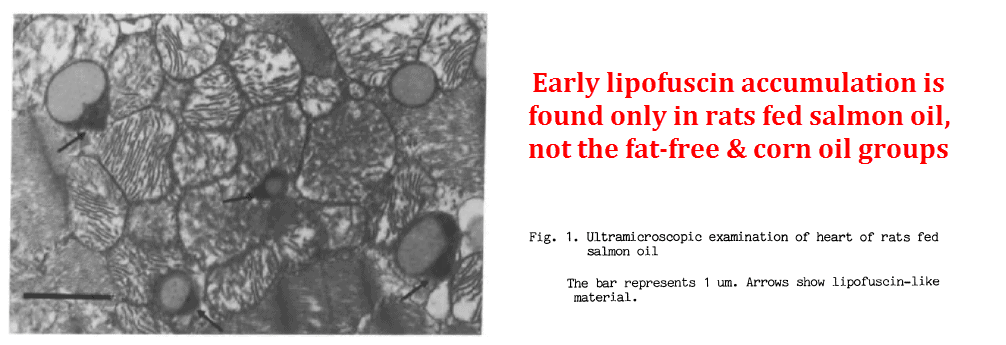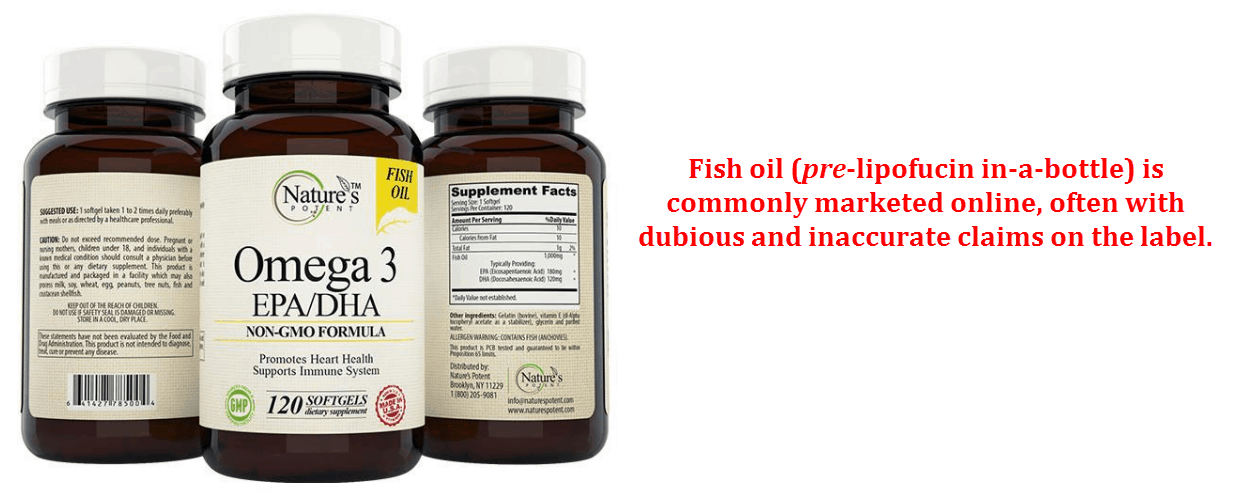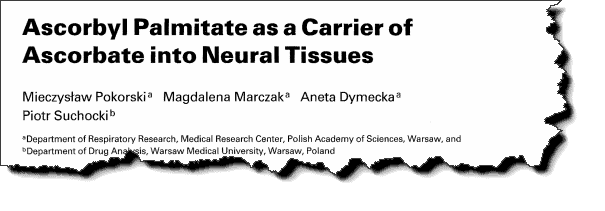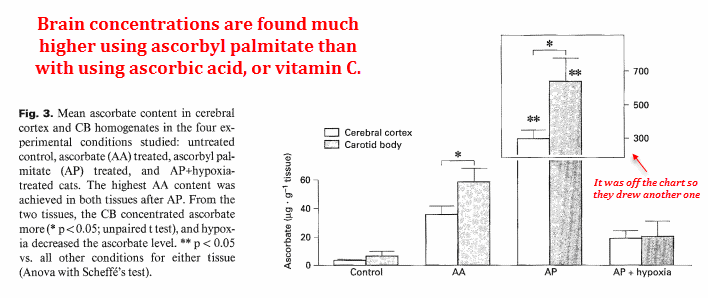
They’re cheap and easy to find — you can even get them from food
—-Important Message—-
This hot wires a man’s pleasure centers for more explosive full-body O’s

I’ve found a way to reduce the refractory period men experience after ejaculations…
And this way, I can come more and enjoy more pleasure.
No waiting around. No “recharge” necessary.
I can keep enjoying that orgasmic feeling for hours, even all day if I want.
And it works in just 45 seconds.
Here’s how to hot wire your pleasure centers for more O’s and more pleasure
———-
These 5 supplements can stop dementia by inhibiting lipofuscin
Lipofuscin is an inclusion body that accumulates over time and is largely responsible for progressive dementia seen with aging.
Small amounts can be observed in very young animals fed certain diets, yet concentrations of this can range-up to extreme values in the elderly.
In centenarians, for instance, lipofuscin has been shown to occupy up to 75% of the interior volume of neurons (Jung, 2007).
‘One of the highlights of postmitotic aging is the intracellular accumulation of highly oxidized and cross-linked proteins, known as lipofuscin.’ ―Jung
Neurons are the main target because they rarely divide.
The lipofuscin in most cells is diluted through each division, which is essentially everywhere besides the brain and heart.
Lipofuscin is commonly called “ceroid” or “age spots” when found on the skin, yet this is far from an innocuous cosmetic issue.
Certain genetic diseases characterized by aberrant liposomal proteins will allow for substantial lipofuscin accumulation even in the young.
Such conditions are associated with epilepsy, vision loss, motor disturbances, and premature death (Siintola, 2007).
Yet there are ways to inhibit its formation, as its accumulation rate is highly diet-dependent.
This fatty material consists physically of proteins crosslinked by products of lipid peroxidation — e.g. malondialdehyde and hydroxynonenal — with iron atoms that were trapped during the polymerization process.
‘Lipofuscin is a highly oxidized cross-linked aggregate consisting of oxidized protein (30–58%) and lipid (19–51%) clusters. It is a yellow-brown material accumulating over time.’ ―Jung
Considering its physical properties, lipofuscin would be somewhat analogous to an oil painting.
In both cases, the most highly unsaturated lipids reliably increase the rate of formation, or the drying time, and the iron pigments are known by painters to speed-up the process of curing.
Iron is highly redox-active metal, and catalyzes lipofuscin by creating free radicals that go on to initiate lipid peroxidation chain reactions.
Yet since proteins also compose lipofuscin, it would be a bit more similar to the 15th century Dutch paintings that used egg tempera and oil together (van Eyck, circa 1435):

Lipofuscin would then be most similar to reddish-orange hues, or the areas where iron oxide pigment were used.
Lipofuscin is one of the best reasons to avoid excess iron and polyunsaturated fatty acids, as it cannot even form without these.
Yet since we do need iron to carry oxygen, the focus should instead be on avoiding PUFAs as much as practically possible.
Although omega-3 fatty acids are better than the omega-6 ones in many ways, they are more-or-less equivalent in this regard.
Actually it’s the long chained omega-3 fatty acids found in fish oil that represent the greatest lipofuscin hazard on account of their sheer multiplicity of double bonds.
Docosahexaenoic acid (DHA) is hailed as being necessary for the brain, yet this fatty acid is actually the most unstable lipid imaginable.
Docosahexaenoic acid has six double bonds, eicosapentaenoic acid (EPA) has five, and the feeding of salmon oil to rats has been shown to greatly increase heart lipofuscin content (Nalbone, 1988).

So fish consumption should probably be limited to a few times per month if that, and most certainly its oil is not worthy of consumption.
Coconut oil and butter are completely safe here, as these fully-saturated fatty acids cannot even undergo peroxidation without any double bonds.
This stability against oxygen is why coconut oil stays liquid forever, and it can never turn into that gunky polymer film you find around the stove and inside the oven.
Using soybean oil to fry eggs on a cast iron skillet would, over time, likely result in a residue chemically-similar to lipofuscin and Jan van Eyck paintings.
‘In conclusion and as already warned by others it appears that the effects of fish oils must be further investigated in all the vital organs and function before being widely used for human purpose.’ ―Nalbone
Although it perhaps cannot be avoided completely…
Lipofuscin and its formation is understood well enough to know exactly how to slow its progress by taking supplements you’d want to take anyway, for other reasons.
Inhibiting lipofuscin should allow a person to live longer, and also maintain their mental acuity for decades longer than your standard fish- and soybean-eater.

Now that it’s established a person ought-to avoid excessive iron and polyunsaturated fatty acids, there are vitamins and minerals that also should be considered.
Certain enzyme cofactors and antioxidants will decrease lipofuscin even further than simply PUFA and iron restriction.
And there is tons of evidence for this, in many species:

The classic lipofuscin-inhibitor is, of course, vitamin E, which has been proven to accomplish this many times over compared to its nearest competitor.
Vitamin E owes this unique property to its antioxidant role in the lipid phase.
Most antioxidants are water-soluble with spheres of protection limited to the cytosol, such as ascorbic acid, yet vitamin E’s solubility places it directly on the lipid membrane: the front line in the fight against lipofuscin formation.
Although this has been demonstrated dozens of times, this study here was one of the better ones on account of its length: most studies are relatively short-lived by comparison, and this one was over two years long.
Starting with rats aged only four weeks, they fed three similar groups otherwise identical diets, varying only in their vitamin E content.
At the specified time post-initiation, the rats were sacrificed and their brains examined for lipofuscin.
It could be worth mentioning that this was a sucrose/casein/starch diet with 5% PUFA, fed as corn oil, and with iron contained in the “mineral mix.”
They found a dose-dependent inhibition of lipofuscin as a function of vitamin E and age:

This is significant, and a very respectable result for just one specific vitamin.
The middle-aged rats showed the most striking difference, and lipofuscin rates in the high vitamin E group were less-than-half that in the deficient group.
The control group represented the intermediate, those that were fed the nominal amount of 20 milligrams per kilogram found in standard rat food.
‘Based on our findings, dietary vitamin E clearly had a significant effect on lipofuscin accumulation with age in the rat brain.’ ―Monji
They explained the amelioration of the lipofuscin variance in the old groups by the downregulation of enzymes such as catalase, superoxide dismutase, and glutathione peroxidase.
Since free radicals were safely contained by the increasing vitamin E, the cell had less need for these enzymes so had apparently underexpressed them.
Thus, a compensatory effect was induced in the cell.
Imagine what you’d see if the high vitamin E group had also been fed coconut instead of corn oil? Perhaps also with low iron?
Yet further reductions are observed by adding selenium to the diet along with vitamin E, as seen in this study on cows:

This study was 137 days in duration, and included selenium along with vitamin E.
Selenium is sometimes used to inhibit lipid peroxidation because it’s a necessary component, as selenocysteine, of the enzyme glutathione peroxidase.
Glutathione peroxidase is responsible for lowering peroxynitrite and hydrogen peroxide, a function it shares with catalase.
And because most animals and people are by no means sufficient in selenium, the primary effect from taking it is often an increased expression of glutathione peroxidase and hence…
A reduction of peroxynitrite and reactive oxygen species.
Not only did they give some of the calves the powerful selenium & vitamin E combination, they also force fed-them linseed oil.
Linseed oil is often euphemistically called flaxseed oil when marketed for consumption.
This is one of the most peroxidizable oils, and commonly used in painting for this reason.
‘These changes were more severe in polyunsaturated fatty acid-fed calves than in animals that did not receive polyunsaturates.’ ―Kennedy
Because cows have a sophisticated digestive system that actively saturates most of the unsaturated fatty acids they consume, the linseed oil had to be modified to circumvent this.
After 137 days, the calves were sacrificed and examined histologically for lipofuscin.
It was found, rather predictably, that the selenium & vitamin E groups had greatly reduced lipofuscin relative to their unsupplemented controls.
The main finding was necrosis and a general degeneration of the heart muscle, and some of the calves had even died from this linseed oil feeding.
‘Macroscopic myocardial alterations were seen in five polyunsaturated fatty acid-fed calves but not in any other experimental calf. Microscopic lesions, comprising multifocal or diffuse cardiocyte degeneration and necrosis, were seen in atrial and ventricular myocardium of all experimental calves. […] Myocardial damage was severe and diffuse in the two calves that died.’ ―Kennedy
Selenium is the most well-studied substance for reducing lipofuscin second only to vitamin E.
Yet, unlike vitamin E, selenium demonstrates a U-shaped curve and can become an oxidant when given in the improper form.
Only inorganic selenium can go from an antioxidant to an oxidant in high concentrations, while selenomethionine and selenocysteine are exempt from this.
The selenoamino acids are naturally found in food, and have selenium covalently bound to an amino acid.
Taking selenomethionine leads to increased glutathione peroxidase just the same yet without any of the risk associated with inorganic selenium.
This is especially helpful in prostate cancer, as methionine concentrates in this organ due to its high polyamine production.
‘No alterations were seen in the hearts of control calves fed vitamin E and selenium-supplemented diet.’ ―Kennedy
Besides glutathione peroxidase, the body has a few more enzyme types constantly working to lower reactive oxygen species:
Superoxide dismutase is exactly what the name implies, an enzyme that turns reactive superoxide (Ȯ₂⁻) back into molecular oxygen (O₂).
There are a few different isoforms of superoxide dismutase, with the copper-dependent form being the more common.
Therefore, it’s good to take a little chelated copper — e.g. copper glycinate — once in a while to ensure a high expression of superoxide dismutase within the cells.
Also worth taking are vitamin B12 and methylfolate, both needed in the brain to methylate homocysteine back into methionine.
Homocysteine is a unique amino acid in that it can form a stable free radical, crossing the blood brain barrier and inducing a lipofuscin cascade.
Homocysteine has been shown highly correlated with cerebrospinal fluid hydroxynonenal, a lipid peroxidation fragment shown to crosslink proteins thereby forming lipofuscin (Selley, 2002).
The Pearson coefficient between these two molecules is remarkable, and represents almost a perfectly straight line (r =.924).
‘These granules had autofluorescent, periodic acid-Shiff-positive, diastase‑resistant, acid‑fast, and sudanophilic properties characteristic of lipofuscin.’ ―Kennedy
There is one more that deserves special attention, and that is vitamin C palmitate.
This molecule is similar to vitamin E in that it’s a lipid-soluble antioxidant, yet it was actually vitamin C palmitate that was found to be more effective.
This was demonstrated nearly 20 years ago, in Korea:

Vitamin C palmitate is also called ascorbyl palmitate, and sometimes even ascorbyl-6-hexadecanoate.
The author of this study called it ascorbyl palmitate.
They tested ascorbyl palmitate directly against vitamin E, the gold standard, on its ability to inhibit the peroxidation of soybean oil, cottonseed oil, corn oil, tallow, and lard.
They found that ascorbyl palmitate was a powerful lipid-soluble antioxidant, inducing a dose-dependent inhibition of peroxidation in concentrations lower than vitamin E.
‘Ascorbyl palmitate showed significantly greater antioxidative activity than α-tocopherol for the reduction of oxidation in all oils.’ ―Lee
Ascorbyl palmitate is freely available online and considered safe at any practical dose.
Half of this molecule is hydrolyzed into plain vitamin C, which is useful, and the other half into palmitate — a safe saturated fatty acid found in coconut oil and butter.
Although evidence suggests that just plain vitamin C can regenerate vitamin E, thereby sparing it (McCay, 1985), it cannot cross the blood-brain barrier as well as ascorbyl palmitate.
This too has also been proven:

They used cats to determine the brain disposition of ascorbyl palmitate.
This molecule was given inside the milk of one group, and an equimolar amount of ascorbic acid was given to another.
They found increased ascorbate levels in the brain when it was given as the palmitate ester.
This really was no comparison, as the brain concentrations of ascorbyl palmitate were over ten times that of ascorbic acid.
So to compare the brain concentrations between the two compounds with such a large difference, they had to draw a chart using two separate scales:

The brain is the area where lipofuscin accumulates the most because neurons rarely divide.
This increased brain uptake makes ascorbyl palmitate the preferred form, along with its solubility properties that lend it an intimate association with lipid membranes.
‘The lipophilic ascorbyl palmitate was able to cross biological barriers and satisfied the tissue demand for ascorbate better than the hydrophilic form. Ascorbyl palmitate should be considered as the preferred form of transport of ascorbate into neural tissues.’ ―Pokorski
If vitamin E can be said to prevent lipofuscin, which it certainly can, then ascorbyl palmitate could be said to prevent more of it.
In a head-to-head comparison, ascorbyl palmitate was found to be more effective (Lee, 1999).
So besides limiting both polyunsaturated fatty acids and excessive iron…
…the supplements ascorbyl palmitate, vitamin E, selenomethionine, copper, methylfolate, and vitamin B12 should act to inhibit lipofuscin further.
With adequate nutrition, supplementation, and PUFA restriction, a person should be able to avoid the loss of productivity and dementia seen with aging…
…and be capable of maintaining their independence longer than people taking iron multivitamins and fish oil.
—-Important Warning for Men—-
What has the FDA been hiding all these years?
Only the top echelon know about this systematic crime…
…that millions of Americans are being harmed, yet these top FDA people have stood by silently, despite the illness and deaths.
Well today, it’s over — because I’m blowing the lid off this very well-kept secret…
…a secret that Big Pharma and the FDA have been hiding from us for more than 100 years.
This secret has the power to turn modern medicine on its ear, if I can get it out before they silence me…
So I made a quick video, hosted on a private page, where I hope THEY won’t see it.
I can’t promise how long it will be up, but every man NEEDS to watch this before they eat another bite of food…
…and I mean ANY food…
———-
